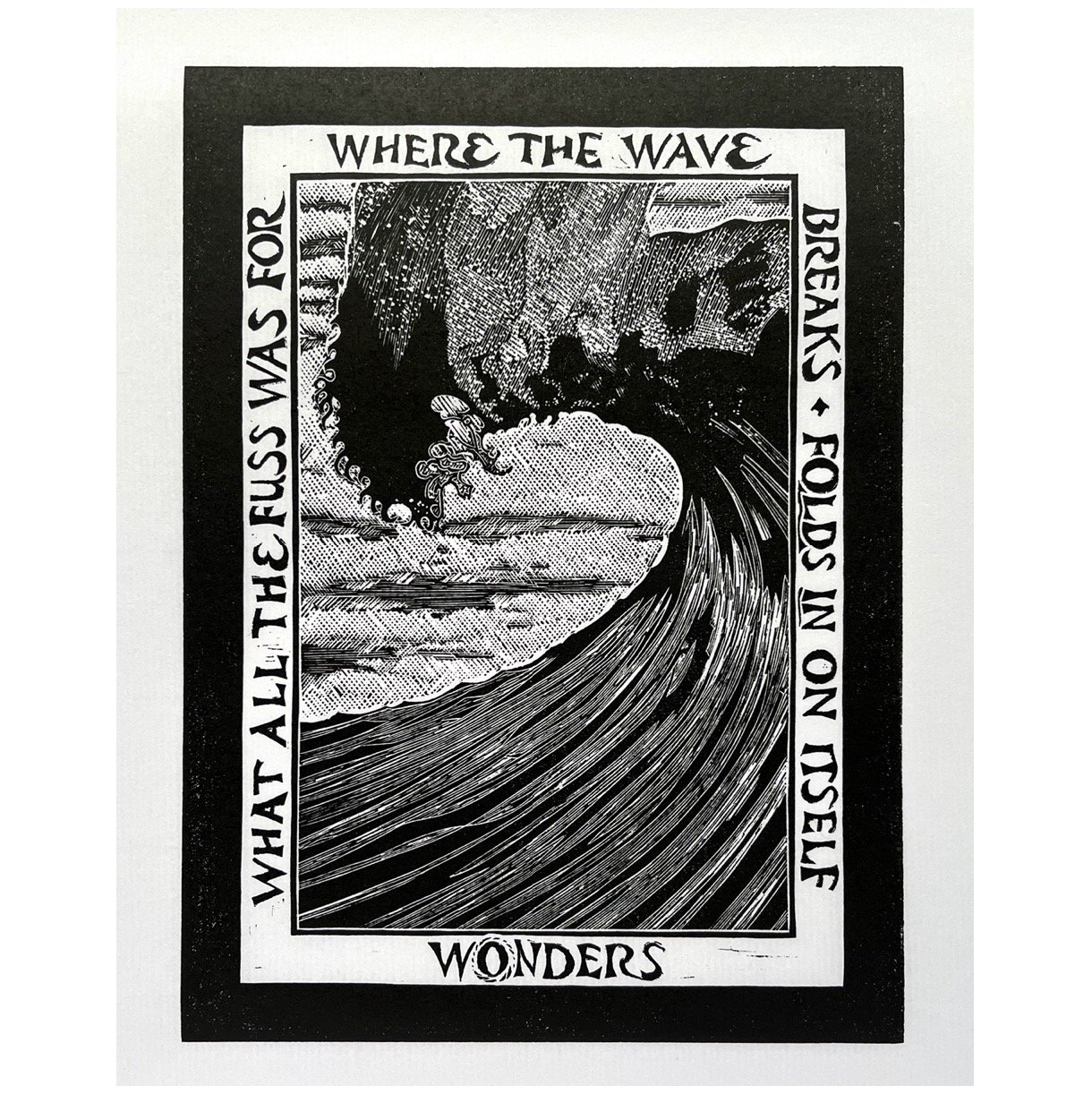 Image 1 of 1
Image 1 of 1


Where the Wave Breaks
Limited edition linocut print (unframed)
14.5 x 19.5 cm (printed area)
Number of prints in the edition: 10
Where the wave breaks
folds in on itself
wonders what all the fuss was for
There is a drama to breaking waves, whether they are wavelets that tickle the shore, or breakers that dash upon rocks. Less so the drama, I imagine, to the sea: a wave is the sea breathing. Such was the thought that came to me as I watched the sea break on Traeth Lafan. Then the words came. Then the print.
The print owes a debt to Hokusai, though one which I was unaware of when I was working the lino. Like Hokusai’s ‘The Great Wave’, (which reads right to left), my wave (which reads left to right) folds in on the viewer so as to pull at the eye.
The prints are hand-pressed from a grey lino block that I cut largely with a v-shaped gouge and with a stippler for the dots. I have editioned them on Sunome Senaka, a lightweight (52 gsm), bright-white Japanese paper. The sheets onto which the image is burnished measure approximately 19.5 x 27 cm.
The edition is limited to 10 prints in total, each of which I have signed, dated, numbered and titled in soft pencil beneath the printed area.
Limited edition linocut print (unframed)
14.5 x 19.5 cm (printed area)
Number of prints in the edition: 10
Where the wave breaks
folds in on itself
wonders what all the fuss was for
There is a drama to breaking waves, whether they are wavelets that tickle the shore, or breakers that dash upon rocks. Less so the drama, I imagine, to the sea: a wave is the sea breathing. Such was the thought that came to me as I watched the sea break on Traeth Lafan. Then the words came. Then the print.
The print owes a debt to Hokusai, though one which I was unaware of when I was working the lino. Like Hokusai’s ‘The Great Wave’, (which reads right to left), my wave (which reads left to right) folds in on the viewer so as to pull at the eye.
The prints are hand-pressed from a grey lino block that I cut largely with a v-shaped gouge and with a stippler for the dots. I have editioned them on Sunome Senaka, a lightweight (52 gsm), bright-white Japanese paper. The sheets onto which the image is burnished measure approximately 19.5 x 27 cm.
The edition is limited to 10 prints in total, each of which I have signed, dated, numbered and titled in soft pencil beneath the printed area.